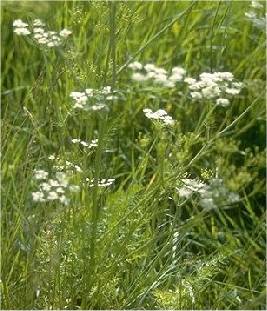|
Gardens Ablaze |
||
|
|
Caraway |
|
|
Additional Caraway Information
Medicinal Uses Site Map
Home |
Caraway is best grown in clumps in full sun and reaches about 2 feet in height. The ground should be worked well to accommodate the long taproot. The seeds should be sown in place if possible, as the seedlings are fairly resistant to transplanting.
Harvest young leaves as required, but
in the second year, after flowering, the entire plant should be cut off
at ground level or pulled root and all. The seeds, leaves and root
can then be dried on paper toweling in a cool place to be stored for future
use.
Caraway makes a good companion plant for some other herbs and vegetables. Please see Companion Planting for further information. In the kitchen, Caraway leaves can be used in salads and soups, and the seeds are wonderful on baked fruits, breads, cakes, and cookies. They also lend themselves well to dumplings, cream cheese, goulashes, stews, and casseroles, adding a mild, smooth, buttery taste. The root can be cooked much like any other root crop, such as parsnips or turnips.
Custom Search
|
|
|
Gardens Ablaze |
||
 Caraway
is a biennial herb with a thick, tapered, edible root - much like a parsnip.
The feathery leaves resemble carrot leaves, but droop a bit more.
The flowers are cream white with a pinkish hue.
Caraway
is a biennial herb with a thick, tapered, edible root - much like a parsnip.
The feathery leaves resemble carrot leaves, but droop a bit more.
The flowers are cream white with a pinkish hue.